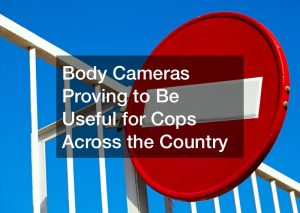Justice Department Lays Out New Plan to Restore Public Trust in the Police

 Public trust in the police is at an all-time low in the wake of the Ferguson, MO shooting that left an unarmed teenager dead. In an effort to bridge the deep gap that has been driven between law enforcement and the public, the Justice Department has announced that it is launching a new initiative to provide better training for police departments against bias in their line of work, the Washington Post reports.
Public trust in the police is at an all-time low in the wake of the Ferguson, MO shooting that left an unarmed teenager dead. In an effort to bridge the deep gap that has been driven between law enforcement and the public, the Justice Department has announced that it is launching a new initiative to provide better training for police departments against bias in their line of work, the Washington Post reports.
The nearly $5 million National Initiative for Building Community Trust and Justice will implement pilot programs in five different communities across the United States to promote community policing and provide police departments with additional bias training. In a recent interview with PBS, Ronald Hampton, the former Executive Director of the National Black Police Association, explained that community policing calls on the members of a community and its local police department to work together to come up with public safety strategies. He added that this new initiative is about taking a comprehensive approach to public safety in communities across the country.
Critics of the new program wonder how effective it will actually be, questioning how the committee heading the initiative will measure public trust in the police. They also question whether it is possible to heal the wounds inflicted by the recent tragedy in Ferguson, which raised the issues of bias among police officers, as well as the militarization of the police.
After the August 9 shooting of Michael Brown, an unarmed black teenager, by Officer Darren Wilson, residents of Ferguson, MO took to the streets in protest. As the riots continued, police responded in military fashion, breaking out riot gear and tanks in an attempt to regain control.
Differing accounts of what took place the night of the shooting also drove the wedge between the police and local residents deeper. Witnesses say that Brown willingly surrendered to the police, while others claim a struggle ensued as Brown attempted to grab the officer’s gun. The lack of an unbiased source in this particular situation has caused many local governments across the nation to require the implementation of police cameras.
Police cameras, either installed in law enforcement vehicles or attached to an officer’s uniform, provide unbiased accounts in controversial situations and have been shown to improve professionalism among police officers. For example, all police officers in Rialto, CA have been required to wear body cameras since 2012. A study of the effectiveness of these cameras showed that within a year of the law’s implementation, complaints against the police by Rialto residents went down by 88%, and the use of force by officers declined by 60%.
“Around the country, more and more District Attorneys are taking the stance that ‘if it’s not on video, it didn’t happen,’” says Jubal Ragsdale of 10-8 Video LLC. “Right or wrong, the fact is that the public expects to see video of every event, and I believe that in the majority of cases, the video is going to benefit the officer and department.”
While many believe these cameras may be the answer to rebuilding trust, opponents are afraid it might have the opposite effect, arguing that people will be more tentative around police if they know everything they say and do is being recorded. It also raises questions about the legality of what can and cannot be recorded and used as evidence in a court of law.
“Too often we see videos shot by a bystander that did not start recording until well into an encounter. The officer’s video will show everything from the beginning. And with cameras that have fully automatic infrared activation, the officers that work the night can now have video too,” says Ragsdale
Whether cameras or the the new initiative to promote community policing are the solution to healing the fractured relationship between the public and police remains to be seen. Only time will tell if the latest efforts by the Justice Department and state governments can solve this deeply rooted issue.







